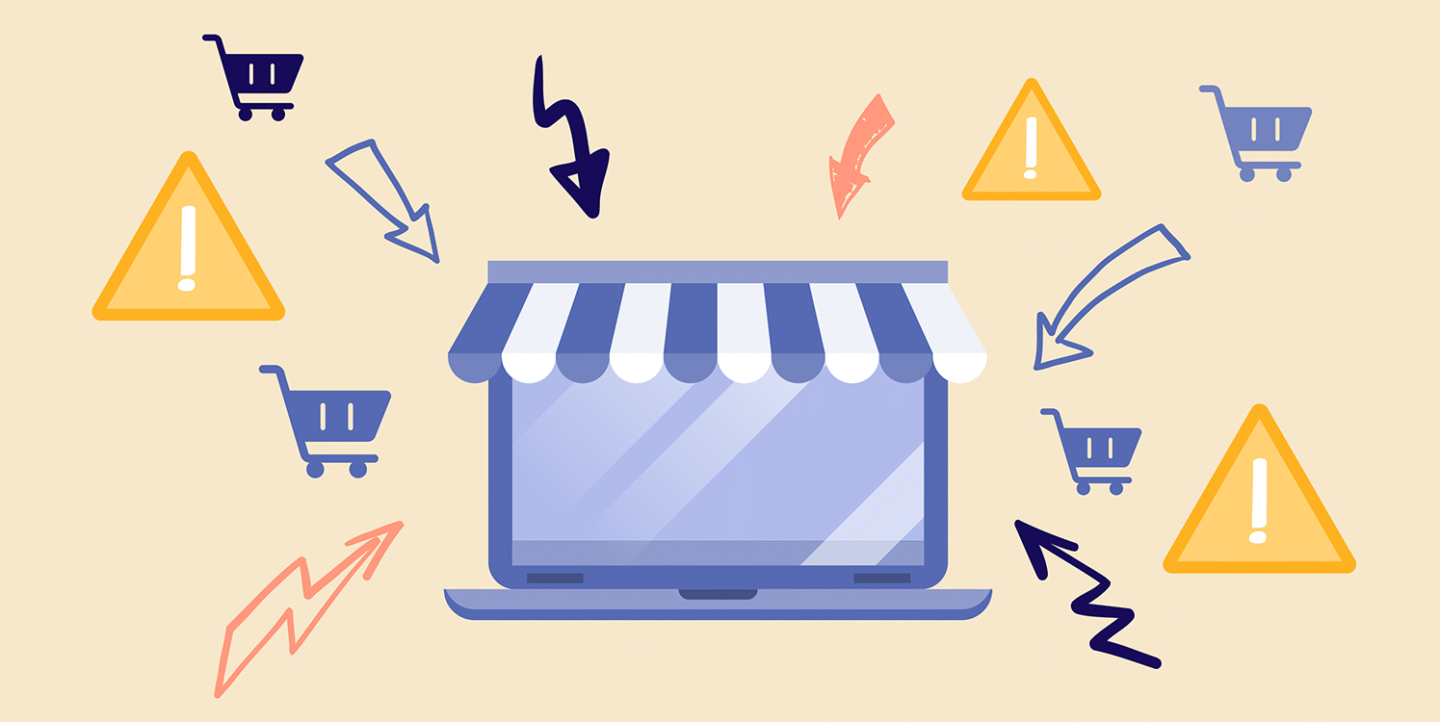
The dead end with the usual fixes
Big sales don’t announce themselves with fireworks. They start with a trickle, and then suddenly, the numbers climb faster than you expected.
Every WooCommerce store owner has felt the same pull when traffic begins to rise. The graph edges upward, nerves kick in, and the instinct is always to reinforce. Add another caching layer. Bolt on a CDN. Tighten the firewall at the origin. The checklist grows, the measures stack, and in theory, it looks as though everything is under control. The store should be ready.
In theory, yes. But real traffic pushes back.
That is when the cracks appear. If you configure caching too aggressively in advance, the site will fly in testing. However, when real shoppers arrive, carts will likely begin showing the wrong products, or totals will refuse to add up. If you lean too heavily on static delivery, product images may load fast, but checkout drags as if stuck in another timezone. And if you trust security at the origin, it will only activate once attacks are already underway, when servers start to stall under the weight.
The cruel part is that none of these measures is neutral. They all cut both ways.
Configure caching too tightly and WooCommerce itself breaks.
Configure it too loosely and nothing improves.
Tighten security rules too much and genuine buyers are blocked as well.
Loosen them too much and malicious traffic consumes the very resources meant for customers.
These aren’t solutions. They are bandages. And they peel away at the worst possible time.
Which leads to the bigger question: why do these fixes always collapse right when stores need them most? And is there a solution?
Why WooCommerce strains under pressure
The reason is simpler than most expect: it runs in real time.
Every product page, every cart update, every checkout calculation happens fresh for each visitor. On a quiet day, that feels invisible. Pages respond, totals line up, and nothing seems fragile. But once traffic surges, that “real time” nature turns into a bottleneck.
Picture your favorite neighborhood diner. When half the tables are full, their single serving kitchen hums along smoothly. Orders arrive, plates leave, and everyone is served without delay.

But fill every booth at once and the system strains. Orders stack up, the pass clogs, the printer spits out more tickets than the cooks can handle. Throughput falls below demand, and the frustration spreads to every table in the room.
WooCommerce behaves the same way under heavy traffic, with almost all requests funneled through a single origin server. Your one point of truth and, at the same time, your one point of failure.
From the storefront, all you see are frozen pages and abandoned carts.
From the shopper’s side, it looks like the brand failed them.
But step into the kitchen and you see the real problem: the system was never built to handle this kind of pressure.
The engineer’s view from behind the curtain
When faced with these limits, the temptation in engineering is always to outsmart the rules. But once you get into WooCommerce’s engine room, you will notice that the reality is sharper.
Some limits simply do not move. And no amount of clever tuning or extra plugins can overcome them. They are baked into how WooCommerce works, and they refuse to budge:
These limits exist for good reasons (they preserve accuracy, security, and trust), but they also create drawbacks under pressure.
🛰️ Distance still slows requests
It is physics, not configuration. Data must cross the network between user and server. You can optimize, but you cannot erase the latency created by geography. It’s like the diner’s kitchen being on the far side of the street. No matter how fast the cooks are, the plates still have to travel that distance before anyone eats.
👤 Each shopper’s session is isolated
That is how carts stay personal, but it also means you cannot cut corners by pooling or sharing responses. Just like every table has its own ticket. You cannot combine orders, even if they all want the same dish. The kitchen must prepare them one by one, which slows everything down when the room is full.
🍰 Stock counts update the moment an item sells
That keeps inventory accurate, but it also forces WooCommerce to update stock in real time. If three people order the last slice of pie at once, the kitchen must decide who gets it. Accuracy is non-negotiable, but it comes at the cost of speed.
🧊 Static caching has hard limits
It works fine for content sites where pages rarely change. But a store is different. Stock shifts in real time, carts update with every click, and discount rules recalculate the moment a coupon is applied. Treat these like static content and you risk showing the wrong total or selling stock that no longer exists. In that case, customers don’t just leave unhappy. They leave and tell everyone they know.
🕷️ Malicious traffic consumes resources
And while real customers are clicking “buy,” bots hammer logins, scripts test stolen cards, and scanners probe plugins. Each one consumes the same resources as a paying customer. In fact, under heavy traffic, even a modest card-testing attack can swallow more than 30% of server capacity.
These are the unbending laws of WooCommerce that also explain why, under pressure, the system bends until it breaks. For engineers, this also means that the failures are inevitable.
This reveals the real challenge: fix the problem without breaking WooCommerce’s delicate balance.
Designing for e-commerce reality
We stopped chasing shortcuts and began studying WooCommerce under real pressure. Not just sterile lab tests where traffic is neat and predictable, but real stores during real sales: carts filling all at once, coupons stacking, checkout pages hammered from every direction.
What we saw confirmed the limits. Over-aggressive caching sped things up until carts showed the wrong products. Static edge delivery kept images fast, but left checkout lagging. Security rules at the origin fired too late, and even finely tuned servers remained bound by the physics of distance.
The lesson was clear: speed, security, and scale could not be treated as separate battles. They had to be solved together, in one system.
That breakthrough came with designing Pressidium Edge to speak WooCommerce fluently.

Caching pages closer to visitors was only part of the puzzle. The cache had to go further and handle dynamic WooCommerce content at the edge. We solved this by teaching it WooCommerce’s own rules. Identifying which pages could be cached, which had to stay fresh, and how to keep carts and checkouts instant without breaking stock accuracy or session isolation.
In live benchmarks, we compared Time-To-First-Byte (TTFB), which is the key metric that tracks how quickly a browser receives the first response from the server.
The results were clear. Edge cut TTFB by 1.5× to 4.7× across 11 global locations, with nearby regions dropping under 100ms worldwide, delivering near-instant load everywhere.
Defenses also had to move outward. Instead of reacting late at the origin, attacks had to be stopped at the edge. Over 100,000 threats were blocked per minute globally before they ever reached a customer’s session. Card testers, brute-force logins, and plugin exploit scanners were cut off at the perimeter, not in the middle of checkout.
And traffic distribution needed to be smarter than round-robin. Real-time health checks let routing adapt instantly, so no buyer felt the bump if a region slowed. Unlike traditional DNS load balancing, which can take minutes to recover, Edge reroutes immediately with no DNS lag.
Having solved these hard problems, it would have been a waste to let Pressidium EDGE become just another layer. So we built it into the platform itself. Not a plugin to configure, not a CDN add-on to manage, but a native foundation that is always on, always updated, and always in sync with everything else.
The result feels less like patching software and more like opening more doors to the same store. Each door is staffed by a team that already knows your regulars, has the stock count in hand, and ushers out troublemakers before they get near checkout. It is like the diner having a kitchen right next to every table instead of one kitchen straining to serve them all.
That is what it means to design for e-commerce reality: a system that doesn’t trip over WooCommerce’s rules, but works in harmony with them.
When the big day finally arrives
It’s the morning of your next big sale. You have been preparing for weeks. Product listings are triple-checked. Banners rewritten until they sparkle. The coupon code has been tested so many times that you could type it in your sleep.
Today is the day it all pays off.
The dashboard greets you with the first overnight orders. Early birds from Sydney, New York, and London already claimed their bargains while you slept. The traffic graph begins to climb like it wants to burst out of the chart.

For a while, everything feels perfect. Orders ping in, carts fill, and checkout flows without friction. Your coffee stays warm. You smile and think, “This is going to be a good day.”
And this time, it stays that way.
Pages load instantly, even as visitors surge. Carts update without hesitation. Checkout clicks respond in real time. Meanwhile, login abuse, card testers, and scanners are stopped at the edge before they steal a single cycle from real buyers.
The alerts stay quiet. The inbox fills with pre-sale questions, not complaints. You ship orders, watch revenue climb, and see the day unfold like a smooth performance you rehearsed a hundred times.
That is what it feels like when WooCommerce runs at the Edge: not fragile, but ready.
The day after tells the real story
The next day, you realize you didn’t wake up at four in the morning to hover over dashboards. You slept. Orders arrived all night from every corner of the world: Sydney, New York, London, places you’ve never shipped before, all processed with the same snappy performance.
Your customer service inbox is full, but not with complaints. Instead of “checkout froze” or “payment failed,” it’s questions about delivery times and restocks. The conversations you want to be having.
The security logs read like a scoreboard of blocked entries you never had to think about. Brute-force attempts, card testers, and exploit scanners all stopped at the edge before they touched your store.

But the real win is that now your next campaign feels less like a gamble and more like an opportunity. You can run it at full throttle, without fear that it will break the store you worked so hard to build.
Instead of worrying about servers, you focus on offers, products, and customers. Instead of bracing for angry emails, you prepare for thank-yous.
Protecting your revenue stream at the Edge
When the emotions settle, the truth is simple. Every technical fix, every safeguard, every system we’ve built ties back to two essentials: money and trust.
✔ Milliseconds saved mean fewer abandoned carts
When pages, carts, and checkouts load faster worldwide, more customers finish what they started.
✔ Fraud blocked means brand trust preserved
Payment pages stay safe under pressure. Card testing and login abuse are stopped at the edge, before they drain performance or reputation.
✔ Surges absorbed mean sales not lost
Flash sales, seasonal spikes, and viral bursts stay smooth. Every customer gets through. Every order completes.
✔ Less complexity means fewer chances for failure
No patchwork of plugins. No bolt-on CDNs. Fewer moving parts mean fewer ways for checkout to go wrong.
✔ Confidence unlocked means growth without fear
You can launch bigger campaigns, expand into new markets, and sell at full throttle, being confident the store will stay fast and keep up.
This is what it looks like when WooCommerce runs at the Edge.
Not fragile. Not risky. But steady, secure, and ready for whatever comes next.
Ready for your next big sale?
See your own store run on Edge instead of just hearing about it.
You can try Pressidium EDGE for free and with full access, and experience the difference.
Run the campaign you’ve been planning. Push your store harder than before. Watch the bottlenecks disappear.
No commitment, no cost.
A real test drive, with your own store, under real-world conditions.
So when the next big day arrives, you’re not hoping the site will hold. You know it will.
Start Your 14 Day Free Trial
Try our award winning WordPress Hosting!


















